Introduction
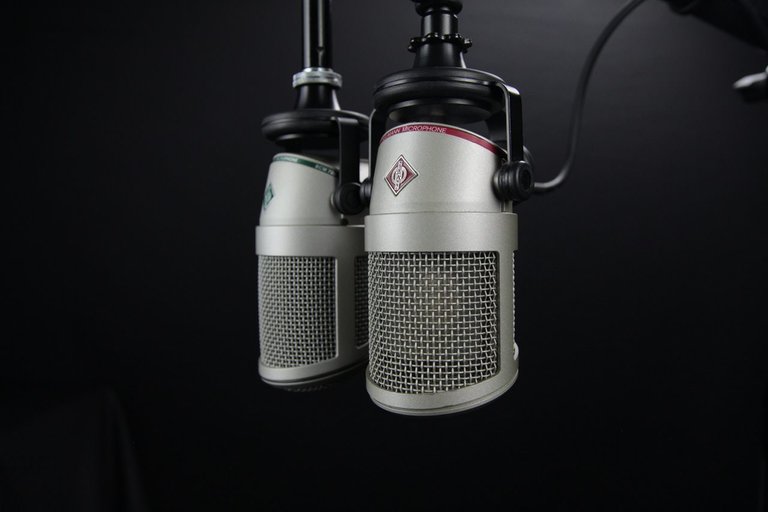
I think this is my first really useful post for Steemians. Some of you might know by now that I'm huge geek when it comes to everything audio related, so I promise i will do my best to explain everything step by step in the most simple way. This is why I also decided to make this post a little bit longer and explain you some technical stuff you need to know when it comes to choosing a proper mic for yourself and confusing words, but if there's something what you don't understand or what you want to ask me about, just leave a comment. I will reply you as soon as possible. There are a lot of kinds of mics, but to keep it simple I will tell you about two most popular kinds of them - dynamic and condenser. And for those who are more into sound engineering, I will prepare soon new post about measurement microphones.
Dynamic Microphones
Dynamic microphones are exactly eeverywhere. You don't believe me? Then take your headphones and connect them to mic input in your laptop or computer, launch the simplest application for audio recording, start recording and start speaking to your headphones. See? It's like magic, isn't it? We can make a simple statement now: every single dynamic microphone is a dynamic speaker and vice versa. But how it works?
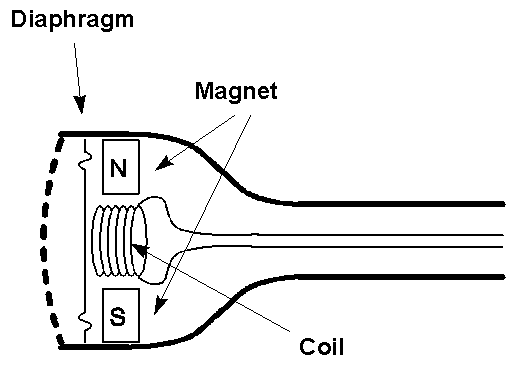
Dynamic microphones are entirely passive in how they turn sound into electrical energy, so they don't need additional source of power like phantom 48V. They have a diaphragm connected to a copper coil which oscillates back and forth through a magnet. It isn't the most efficient method in terms of reproducing sound because it requires a lot of energy to move coil attached to the diaphragm. It basically means that dynamic mics are less sensitive than condenser ones. Additional result of it is the fact that they have something called cardioid pickup pattern and it means that they are more sensitive to sound from behind and the sides.
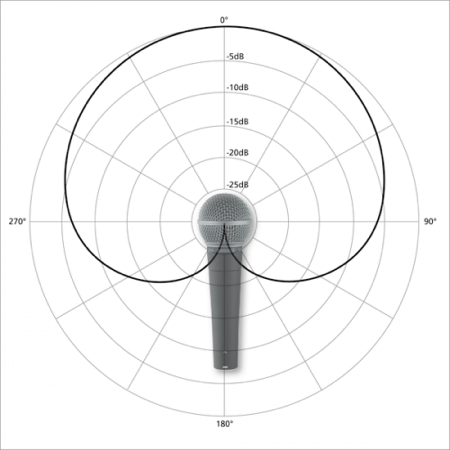
Condenser Microphones
Condenser microphones are way more complex devices than dynamic ones. They have very very thin gold sputtered foil mounted in front of a solid metal disk. Those two things are so close that they almost touch each other. The metallized foil is a diaphragm, the solid metal disk is the back electrode and together they form a capacitor. Condenser is another great word for "capacitor, there are some people who call those mics "capacitor microphones" and it is also a proper name for them. As you may remember from school, a capacitor can store small amount of electrical energy and it is nothing but two metal surfaces facing each other. The closer they are, the higher the capacitance. When sound hits the thin gold sputtered diaphragm, it moves to the rhythm of the soundwaves. The solid black electrode does not move. What we have here, is a relative movement between diaphragm and back electrode. It basically means that te capacitor changes its capacitance as a result of the soundwaves that hit the diaphragm. This is how acoustic energy is transformed into an electrical signal. Really good thing about condenser mics is the fact that the diaphragm has very very low mass, it means that it is more sensitive because it can move faster. Unfortunately, they need to be powered by phantom 48V, it means that you will need to buy audio interface like Focusrite Scarlett Solo or mixer which might be plugged by USB to your computer.
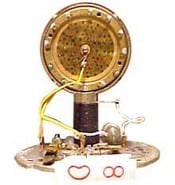
Technical Stuff
Pickup Patterns
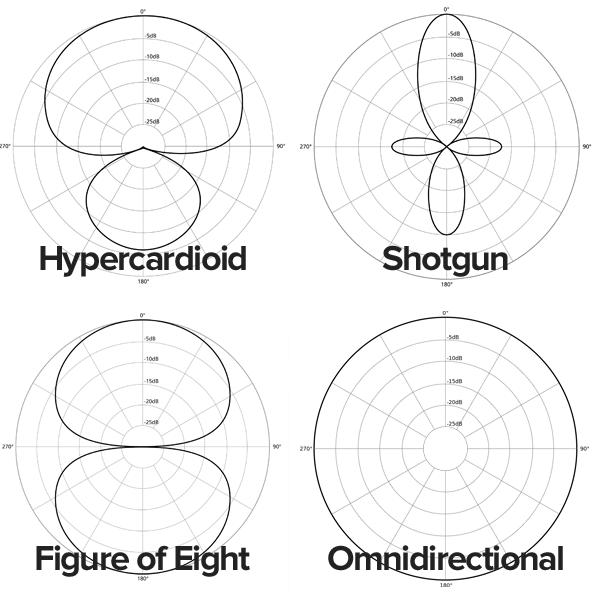
Cardioid
Cardioid pickup pattern is undirectional.
Uses and things to know:
- Mics with this pattern are used to capture a single source situated inf front of them.
- This is probably the best pattern for live performances.
- There are many types of cardioid pickup patterns like: supercardioid, halfcardioid and hypercardioid.
Figure Of Eight
This is the pattern which you can usually find in large diaphragm condenser and ribbon microphones. It will record sound from front and back of the mic, but it will ignore sounds from the side.
Uses and things to know:
- Before trying this using this one for two vocalists, you should try two cardioids first.
- It is perfect solutions for podcasts - no more need for buying two mics.
Omnidirectional
It accepts sound from every direction, so we don't have to point it anywhere. The biggest disadvantage is the fact that they are monophonic instead of stereo.
Uses and things to know:
- This microphone shoud be very close to the source of sound because it pickups exactly everthing what is happening around.
- These mics can work really great to record ambient sound in forest or int he middle of football arena.
Hypercardioid
The difference between cardioid and hypercardioid is that hypercardioid mic is even more narrow. The consequence of this is that it will also pick up some sound from behind the microphone.
Uses and things to know:
- To deal with the sound from behind, you can turn up the gain so the source in front is much louder than any ambience.
- There is too much of proximity effect.
Characteristics
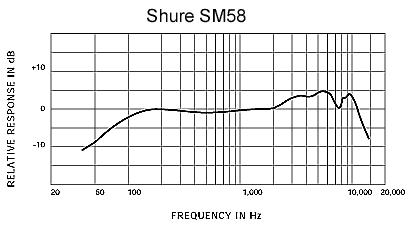
This is very important part of this post. Chacarcteristics chart is the thing that we use to learn how microphone gets the sound. Our example for today is legendary Shure SM58. As we can see in the picture, it is almost linear from around 120-130 Hz to somewhere above 1 kHz, let's say it is ~1200 Hz, then there is something what looks like hills. Those hills means that mic gets up to 3 dB more of sound in those frequencies. We can also read that it has frequency response from around 40 Hz to around 15 kHz with big drops in the very low and high frequencies. There are languages like Polish which due to its weird sounds requires mic that has frequency response up to 20 kHz.
Equivalent Noise
This specification is measured in dBA SPL and it basically means, how loud are noises produced by mic when it's connected and it is recording silent. This number should be as low as possible, but it means that you will need to spend more money on your mic, so let's tell that it should be around 4.5 - 6.0 dBA SPL for homerecording.
Signal/Noise (Signal to Noise Ratio or SNR)
This specification is also measured in dBA SPL, but this time we want that number to be as high as possible and standard for homerocrding is around 80-90 dBA SPL. This parameter compares the level of a desired signal to the level of background noise.
Sensitivity
The lower the number, the more gain you will need. Shure SM 58 has around -54 dB and Rode NT-1 has around -29 dB. Dynamic mics have this number much lower than condenser ones.
Max SPL (Sound Pressure Level)
This basically tells you how loud the sound might be before distortions. Microphones these days have this number so high that it is really difficult to go over it for example Neumann TLM 102 Max SPL is 144 dB and pain threshold of dB for human's ear is 130 dB, your loudest scream might achieve 128 dB and a gun shot is 133 dB.
Dynamic Range
This spec is telling you the amount of usable audio you can get out of the microphone. How to count it if it isn't in specifications sheet? You just have to subtract equivalent noise from maximum SPL.
Impedance
We have output and input impedance, but this parameter isn't very important for you unless you want to use very long cables which we don't use in homerecording. You should have no problems with 10 to 20 ft long cables.
Load Impedance
This is what is interesting for us. This is telling you what impedance of your pre-amp should be to get the optimal results. The rule is that your pre-amp's impedance should be at least 5 times that of the output impedance of your mic. If it's higher then you have no prolem, but if it's a little bit lower then you might loose some max SPL and frequency response, but it will not damage your mic at all.
Power Requirements
This is parameter related to condenser mics, it might be 24V or 48V pantom power.
Summary
Choosing proper mic depends on many factors like:
- environment of work,
- skills in using it (hypercardioid might be tricky for beginners),
- what you want to record.
To sum up, I would buy condenser mic for vocals recording and dynamic mic for live performances. I also would check out on youtube how specific model of microphone sounds to know if I like it. If you want to record vocals with condenser might you have to buy audio interface or USB mixer to power it up and you will need some acoustic treatment in your room. Acoustic treatment doesn't have to be very expensive because you aren't building professional studio for Jay-Z or Justin Bieber. I will give you small hint about it and this hint is: books, pillows, couches and beds. If you have any questions, ask me in the comments down below. If you learned something or liked the post, upvote.
Nailed it
Most especially the part of what u want to record
Very useful for wannabe sound pros. Love the polar pattern illustrations. Very useful. Just resteemed.
Actually, it is for beginners and for those who want to start singing, but they don't know much about technical stuff. Wannabe producers wouldn't care about post like that because they "know" everything better than others".
Now I'm not really an audiophile myself, but I do appreciate this post! I'll definitely look it up again some time in the future when I'm having that ''I wonder how microphones work'' moment. :'D
Me and my partner have a Behringer C-1 and he's used it for recording some stuff on his own (as a hobby). I haven't really used it myself yet, but will definitely try it out some day.
Thank you very much for kind words :) Have fun with C-1 ;)
Great work brother, quality Mics are my main concern any where I go for performance
click here.Congratulations @soundworks, this post is the most rewarded post (based on pending payouts) in the last 12 hours written by a Newbie account holder (accounts that hold between 0.01 and 0.1 Mega Vests). The total number of posts by newbie account holders during this period was 4335 and the total pending payments to posts in this category was $2693.75. To see the full list of highest paid posts across all accounts categories,
If you do not wish to receive these messages in future, please reply stop to this comment.